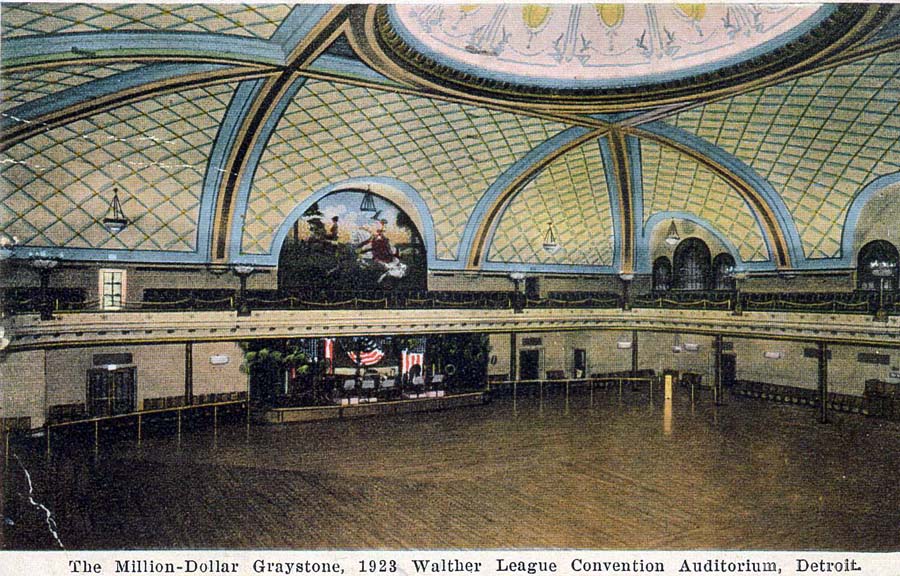Detroit bandleader Jean Goldkette transformed the venue, planned for restaurant, into a venue that became legendary in the history of Jazz, it was called the Graystone Ballroom. Doors opened with a event called the All-University Ball, on Feb. 27, 1922. It was billed as “Detroit’s Million Dollar Ballroom” at the time of its opening at 4237 Woodward Avenue.
Detroiters have always loved to dance, and this was a massive ballroom where they could strut their stuff and do the Charleston and Lindy Hop with room to move. They flocked to the Graystone in droves to hear big bands fill the room with jazzy melodies. The ballroom could accommodate 3,000 dancers — 4,000, if they got close… The 60-foot-high domed ceiling was a paradise for those who came to waltz or watch from the balcony that ringed the ballroom floor.

The ballroom was hugely popular, the Graystone became Detroit’s “cradle of jazz,” and many greats including Glenn Miller, Duke Ellington, Billie Holiday, Ella Fitzgerald, Count Basie and Guy Lombardo took the stage here. McKinney’s Cotton Pickers and Jean Goldkette’s Orchestra became nationally renowned while playing at the Graystone. Benny Goodman, the “King of Swing”, said he once drove all night from Chicago to see the legendary Bix Beiderbecke when the coronet player was part of the Graystone’s house band in the 1920s. The 20’s audience was mixed but the riots in 1940’s caused a racial rift that segregated the Graystone audience for 30 years…
The Graystone was Detroit’s greatest contribution to jazz, according to historian Lars Bjorn’s “Before Motown,” for its role in developing “modern” or “bebop” jazz.
As time went on into the 60’s the Graystone started booking R&B acts, like Detroit legends Jackie Wilson and Little Willie John, who would pack the house, on the same bill. These soulful crooners would fill the house.
In 1963, Gordy, a young record company executive, bought the Graystone for $123,000 — just under a $1 million today. Not only could black Detroiters now see a concert any day they chose, not just on designated “colored nights,” but also Gordy thought that having his acts perform in such a grandiose setting help his young stars become more polished. Under Gordy’s direction, Motown installed state of the art new sound system to help his artist sound their best in the venue. It is said, an associate suggested that Gordy rename the Graystone, but Gordy refused, saying that the memories of the good old days would lure new audiences.
After Motown moved to Los Angeles the structure was left to decay into ruins. In 1974 James Jenkins, a retired streetcar and bus driver, founded the Graystone International Jazz Museum to try to save the aging and dilapidated landmark. All this was to no avail, by the end of the decade, Motown announced that it would level the old ballroom. The wreckers arrived on July 19, 1980, destroying the legendary ballroom and erasing it from the skyline.
